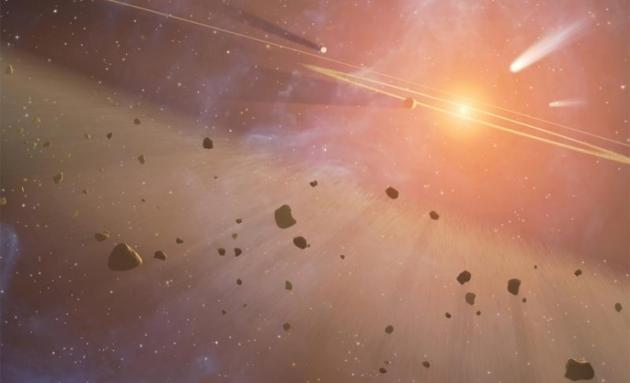Scientists Scientists Have A New Theory On How Life Forms On Asteroids
Oct 03, 2013 20:56

There have been many theories about how life may have began on Earth. Scientists are working on a theory that it came via an asteroid. But how did life get onto an asteroid in the first place?
Scientists at Rensselaer Polytechnic Institute, have come up with a new theory that could properly explain how organic material forms on an asteroid.
The theory revolves around the idea that the asteroids were once warm enough that they could sustain liquid water, which is necessary for organic molecules to form. But space temperature is cold, so how did they get heated up to the right temperature?
According to one theory, is that they were heated radioactively, similar to Earth's interior. Another theory involves how plasma interacts with a magnetic field. But both these theories are based on an assumption that the asteroid belt between Jupiter and Mars were once warm enough to do this. They don't work because the sun was much dimmer back then meaning that the area would be even colder than it is now.
Scientists from Rensselaer posit that an asteroid creates an electric field when it moves through a magnetic field, causing the asteroid to heat up. They used this understanding of how the process works and re-calculated the electric field and determined that something called multi-fluid magneto-hydrodynamics was at work on the asteroids.
When plasma is introduced to a magnetic field, its neutral particles rub up against other particles to create friction which then translates to heat and that creates the correct temperature for organic molecules to form.
It's a good theory no doubt, but still not proven just yet.
Via Rensselaer Image Credit: NASA/JPL-Caltech







































































